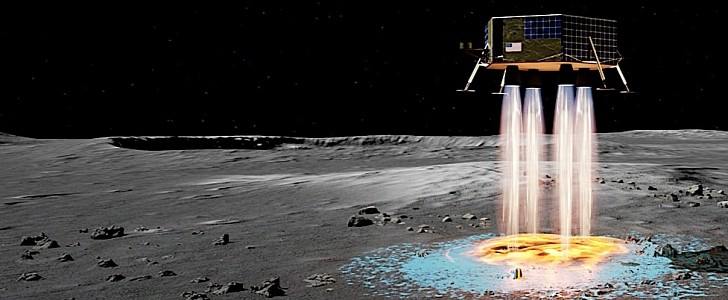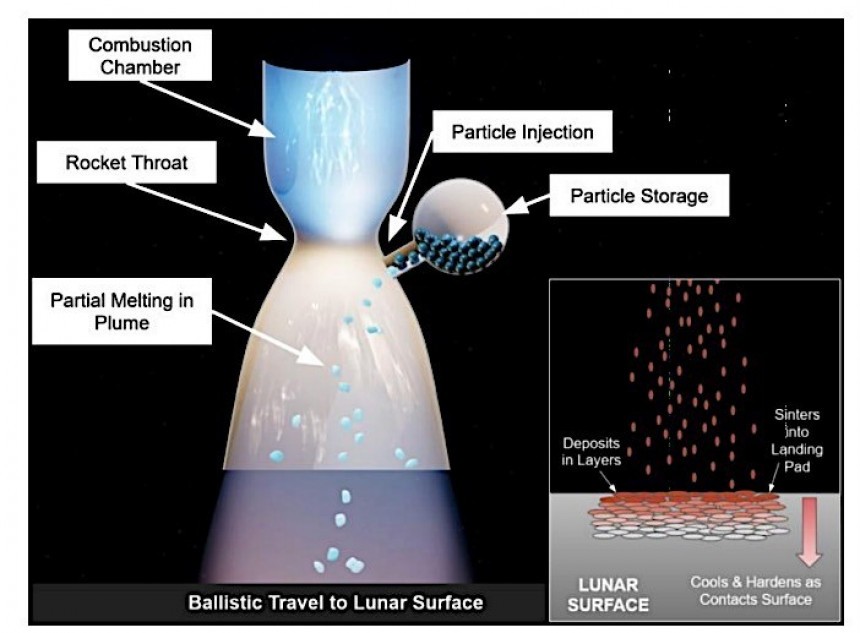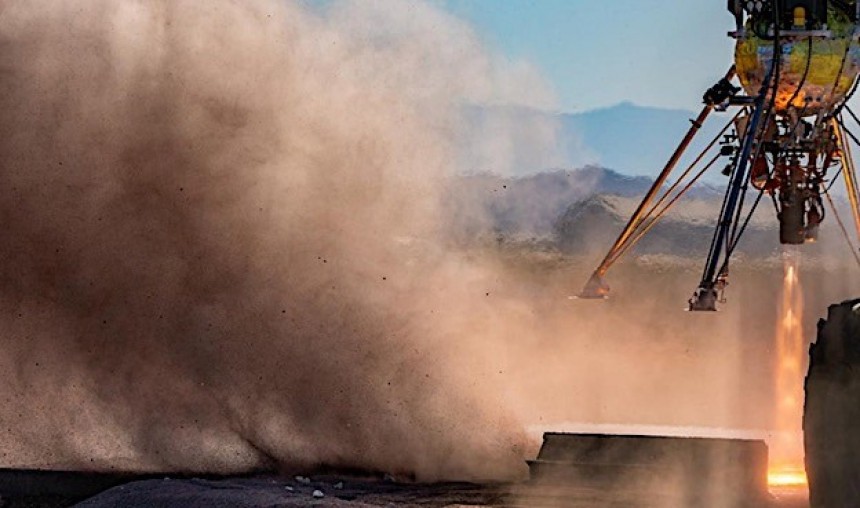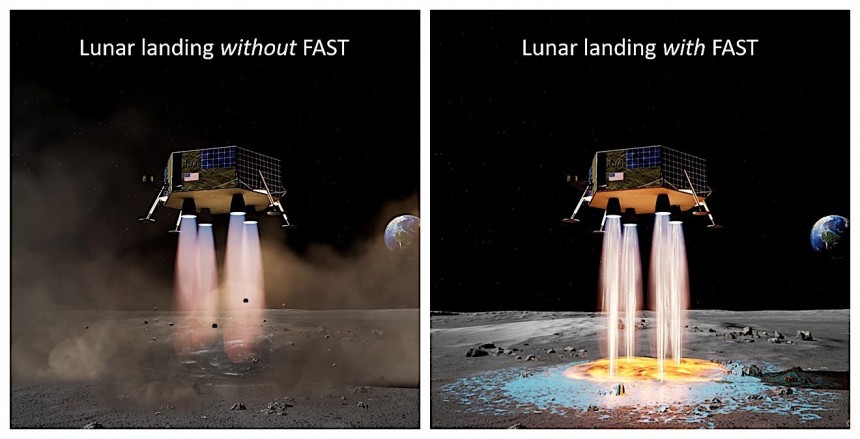There was never a better time for space exploration enthusiasts to be alive. No matter the nation one was born into, few can deny that what the American people and the organizations born here are currently doing will probably define the future of the human race.
At the time of this writing we have a successful, privately-backed spaceship program taking astronauts to the International Space Station. We have three private companies (SpaceX, Virgin Galactic, and Blue Origin) taking tourists into space. We have the Artemis program in the pipeline, aiming to return humans to the Moon, and give them the means to make a life for them there. And, most importantly, we have a wealth of entities working to develop the technologies needed for space and other worlds to become our way of life.
One of these entities is Masten Space Systems, a group involved in several insanely innovative projects meant to support the Artemis lunar exploration program. We’ve already talked about a few of them, including the so-called Masten Rocket Mining System, meant to rapidly extract frozen volatiles from the Moon in an unlikely way.
Back in September, Masten came out with another crazy project. One meant to making landing on the Moon, a particularly hazardous task, safer than it ever was.
The technology is called Flight Alumina Spray Technique, or FAST, and in essence will allow spacecraft landing on the Moon to make their own landing pads as they descend onto the surface. They'll do this by depositing ceramic particles over the lunar regolith, essentially covering and preventing it from being ejected from the surface by the force of the descending rocket engines.
You see, the Moon is virtually coated in a thick layer of crushed rock. It also has a very week gravity, and when combining these two traits, you get one very dangerous place to land your spaceship on.
Lunar dust, which has the nasty trait of being made of razor-sharp grains, has been an issue ever since the years of the Apollo program, but it’s going to turn into a real problem for Artemis. Unlike the Apollo landers, which weighed about 10 metric tons of landed mass, the Artemis missions will weigh between 20 and 60 metric tons. That means they’ll require a hell of a lot more powerful rockets to slow them down, and that in turn translates into potentially a much larger quantity of ejected regolith.
Masten estimates these landers coming down on the surface of the Moon will throw lunar surface particles at speeds of up to 3,000 meters per second (6,711 mph/10,800 kph), turning them into real threats for the hardware and astronauts going there.
Of course, NASA could try and build landing pads on-site for each of the missions to come, but that would be extremely costly (some $120 million per pad), but also extremely difficult, as it’ll have to first land, in these hazardous conditions, something capable of building the pads.
Masten’s FAST is one of the solutions currently being considered through the NASA Innovative Advanced Concepts (NIAC). The idea is to have “ceramic particles injected into rocket plume” so that they can be deposited on the surface as the lander is coming down, then thanks to the heat, fused over the lunar regolith, forming “a hard landing pad with greater thermal and ablation resistance.”
Masten is working with several other groups to make the idea a reality, including Honeybee Robotics, Texas A&M University, and the University of Central Florida.
The company took advantage of being included in the first phase of NIAC and already has some hard numbers to work with. For instance, it now has some ideas about the optimal landing pad thickness, the temperatures needed for the coating to form, or the time it would take the landing pad to cool.
As per the data available, a successful landing pad for a large Artemis lander would need alumina ceramic particles sized 0.5 millimeters in diameter to survive the engine plume and reach the surface. These particles would have to impact the Moon at speeds of 1,500 meters per second (3,355 mph/5,400 kph) to create the 1-millimeter thick base layer. Then, to make subsequent layers, liquefied particles 0.024 millimeters in diameter would be needed to be spat at 650 meters per second (1,454 mph/2,340 kph).
Masten says full deployment would take 10 seconds, during which time 186 kg (410 pounds) of alumina would have to be smashed into the ground from 30 meters (98 feet) up to create a 6-meter diameter (20 feet) landing pad. It would take it about 2.5 seconds to cool to a safe temperature for the spaceship to land.
The FAST concept is still in early stages, and a lot of things still need to be ironed out before declared ready for use. It will probably not be deployed for this decade’s lunar missions, but there’s no way of telling how this will change planetary exploration in the decades to come.
One of these entities is Masten Space Systems, a group involved in several insanely innovative projects meant to support the Artemis lunar exploration program. We’ve already talked about a few of them, including the so-called Masten Rocket Mining System, meant to rapidly extract frozen volatiles from the Moon in an unlikely way.
Back in September, Masten came out with another crazy project. One meant to making landing on the Moon, a particularly hazardous task, safer than it ever was.
The technology is called Flight Alumina Spray Technique, or FAST, and in essence will allow spacecraft landing on the Moon to make their own landing pads as they descend onto the surface. They'll do this by depositing ceramic particles over the lunar regolith, essentially covering and preventing it from being ejected from the surface by the force of the descending rocket engines.
Lunar dust, which has the nasty trait of being made of razor-sharp grains, has been an issue ever since the years of the Apollo program, but it’s going to turn into a real problem for Artemis. Unlike the Apollo landers, which weighed about 10 metric tons of landed mass, the Artemis missions will weigh between 20 and 60 metric tons. That means they’ll require a hell of a lot more powerful rockets to slow them down, and that in turn translates into potentially a much larger quantity of ejected regolith.
Masten estimates these landers coming down on the surface of the Moon will throw lunar surface particles at speeds of up to 3,000 meters per second (6,711 mph/10,800 kph), turning them into real threats for the hardware and astronauts going there.
Of course, NASA could try and build landing pads on-site for each of the missions to come, but that would be extremely costly (some $120 million per pad), but also extremely difficult, as it’ll have to first land, in these hazardous conditions, something capable of building the pads.
Masten is working with several other groups to make the idea a reality, including Honeybee Robotics, Texas A&M University, and the University of Central Florida.
The company took advantage of being included in the first phase of NIAC and already has some hard numbers to work with. For instance, it now has some ideas about the optimal landing pad thickness, the temperatures needed for the coating to form, or the time it would take the landing pad to cool.
As per the data available, a successful landing pad for a large Artemis lander would need alumina ceramic particles sized 0.5 millimeters in diameter to survive the engine plume and reach the surface. These particles would have to impact the Moon at speeds of 1,500 meters per second (3,355 mph/5,400 kph) to create the 1-millimeter thick base layer. Then, to make subsequent layers, liquefied particles 0.024 millimeters in diameter would be needed to be spat at 650 meters per second (1,454 mph/2,340 kph).
The FAST concept is still in early stages, and a lot of things still need to be ironed out before declared ready for use. It will probably not be deployed for this decade’s lunar missions, but there’s no way of telling how this will change planetary exploration in the decades to come.









